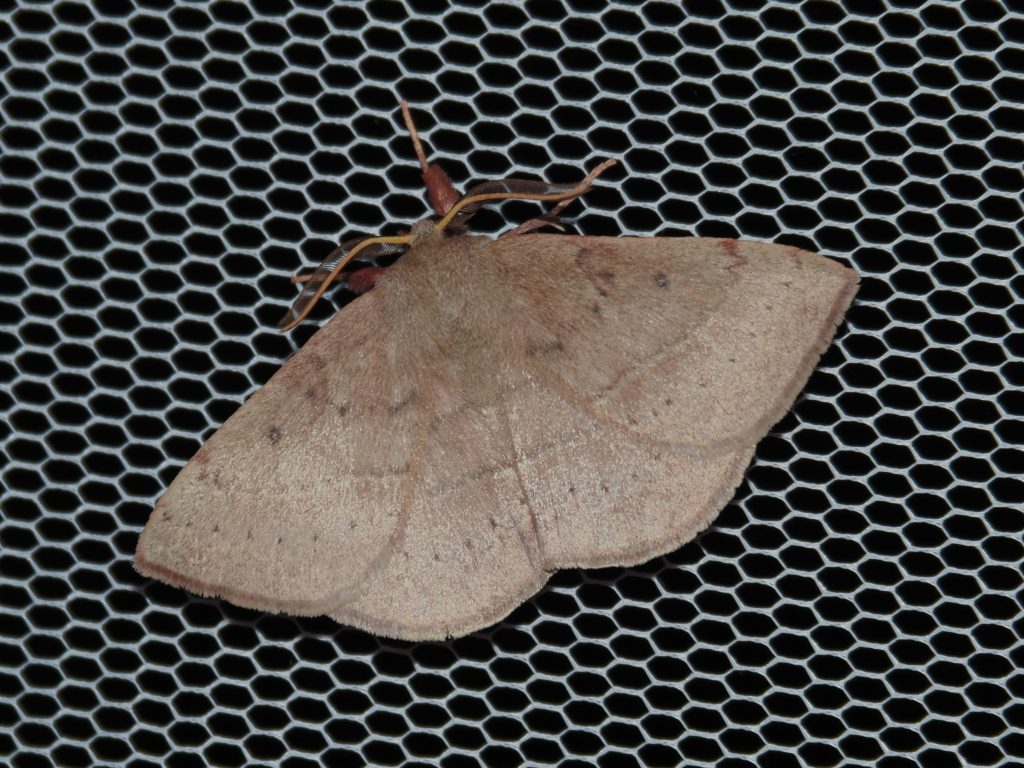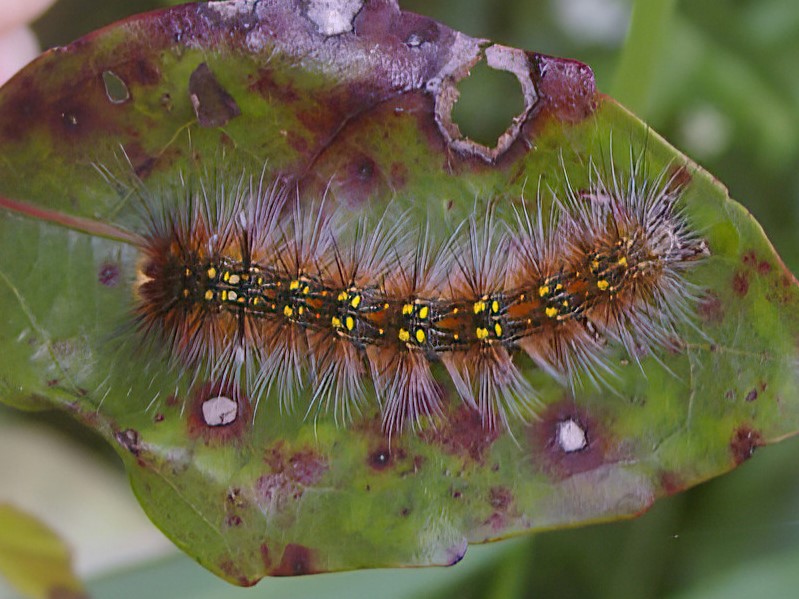
Anthela acuta
This moth occurs in Queensland, New South Wales, ACT, Victoria, South Australia and Tasmania. We have seen it in all months of the year apart from April, May and June (TREV TO CHECK).
Dr Andreas Zwick: “The Anthela astata/acuta complex is highly variable and shows a dazzling variety of colours and wing patterns, even within the offspring of a single female – anything from plain brown, grey and orange to strongly speckled. This complex includes a number of species (also A. ekeikei in New Guinea), many of which are either currently regarded as synonyms or undescribed. There are clear differences in male genital structures for some of them, but without examining primary type specimens for all described species (including synonyms) and using molecular data, it’s not possible to revise this variable complex. A. astata seems to refer to a larger species, A. acuta to a smaller species, but in both cases there are multiple species involved and there are intermediates in size, too. Hence, I generally refer to any of these species as the A. astata/acuta complex. Most, if not all, of your species seem to be smaller and probably A. acuta (or one of the many synonyms that should be valid species).”

























Larval foodplants
Different races appear to feed on a variety of foodplants. Many of the larvae we have seen feed on grasses in POACEAE. One was on Scolopia braunii Flintwood and one on Parsonsia straminea Common Silkpod.